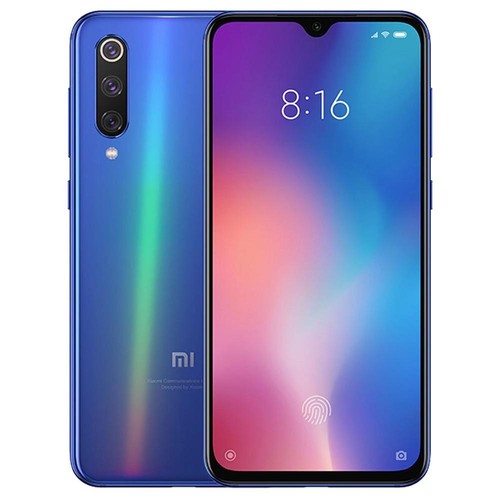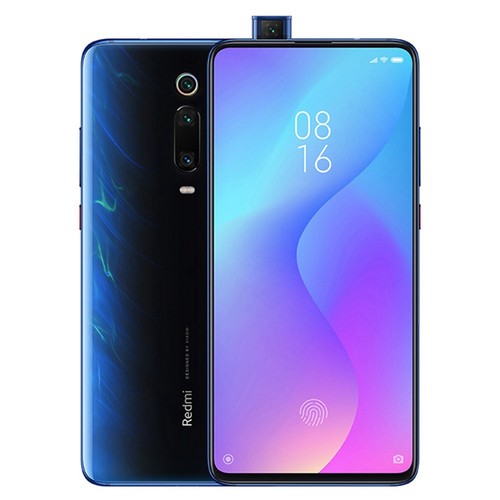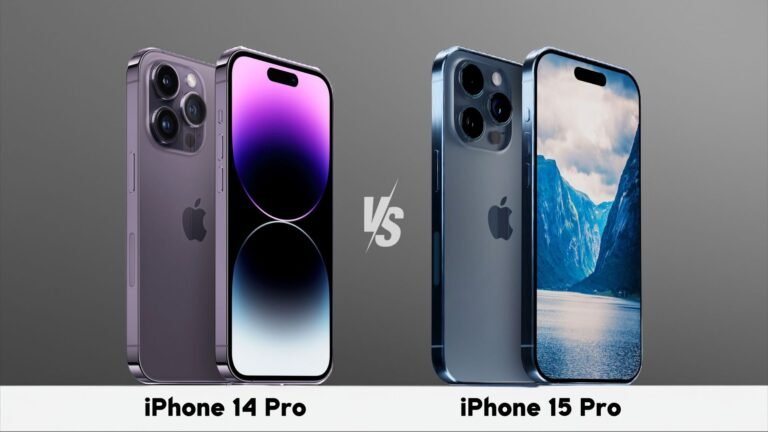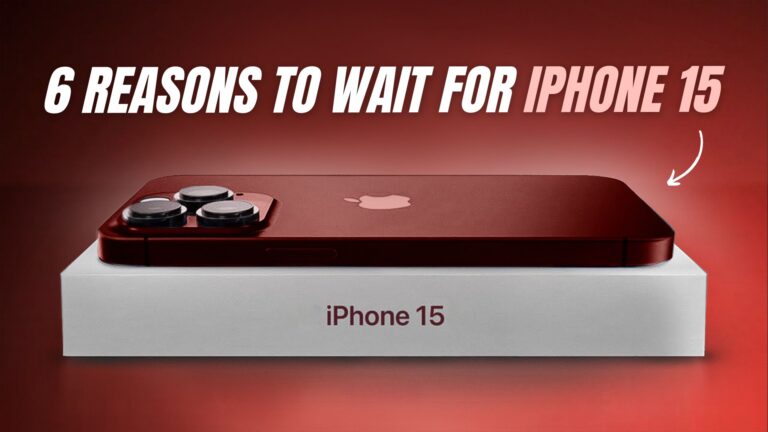 |  |
|---|---|
| MI 9 | REDMI K20 PRO |
| BUY NOW | BUY NOW |
| PROS | PROS |
| Affordable price. Impressive camera setup. Powerful chipset. | Terrific value for money. Versatile cameras. Performance. Distinctive design. |
| CONS | CONS |
| Gets hot rather easily. Odd-looking UI. Low battery capacity. | Notification spam in MIUI. Cameras need a bit more work. Fast charger not included. |
BASIC SPECS
| MI 9 | REDMI K20 PRO |
| Released 2019, March | Released 2019, June |
| 173g, 7.6mm thickness | 191g, 8.8mm thickness |
| Android 9.0, up to Android 10.0; MIUI 11 | Android 9.0; MIUI 11 |
| 64GB/128GB/256GB storage, no card slot | 64GB/128GB/256GB storage, no card slot |
| 6.39″ Display | 6.39″ Display |
| 48MP Rear Camera | 48MP Rear Camera |
| 6/8GB RAM | 6/8GB RAM |
| 3300mAh Battery | 4000mAh Battery |
DESIGN & BUILD
| MI 9 | REDMI K20 PRO | |
| Dimensions | 157.5 x 74.7 x 7.6 mm (6.20 x 2.94 x 0.30 in) | 156.7 x 74.3 x 8.8 mm (6.17 x 2.93 x 0.35 in) |
| Weight | 173 g (6.10 oz) | 191 g (6.74 oz) |
| Build | Glass front (Gorilla Glass 6), glass back (Gorilla Glass 5), aluminum frame | Glass front (Gorilla Glass 5), glass back (Gorilla Glass 5), aluminum frame |
| SIM | Dual SIM (Nano-SIM, dual stand-by) | Dual SIM (Nano-SIM, dual stand-by) |
Mi 9:
I have to say that the Mi 9 is a real pleasure to look at and thus certainly look more extravagant than it’s predecessors. The design is a lot more colorful and that isn’t only because of the popping main colors the phone is available in but also due to its holographic back glass. The rear glass is curved to all of its sides, resulting in a much smoother transition to the metal frame. Also this makes Mi 9 look much thinner.
Redmi K20 Pro:
The redmi k20 pro is also known as a Mi 9T pro in many markets. This phone looks like a 2019 flagship. Thin bezels all around, no notch, and a pop-up camera that makes the elegant effect. It’s a fun selfie camera that lights up when it pops up. Although they could have gone beyond making it a decoration and included a selfie flash instead.
There’s also a red accent on the power button and around one of the cameras in the back too. Other than this, it’s a pretty but standard looking glass sandwich with a carbon fiber looking gradient on the back.
On the bottom, you’ll find a micro SD card slot that comes with a minimum of 64GB of storage, although with that option you only get 6 GB of RAM instead of 8.

DISPLAY
| MI 9 | REDMI K20 PRO | |
| Type | Super AMOLED capacitive touchscreen, 16M colors | Super AMOLED capacitive touchscreen, 16M colors |
| Size | 6.39 inches, 100.2 cm2 (~85.2% screen-to-body ratio) | 6.39 inches, 100.2 cm2 (~86.1% screen-to-body ratio) |
| Resolution | 1080 x 2340 pixels, 19.5:9 ratio (~403 ppi density) | 1080 x 2340 pixels, 19.5:9 ratio (~403 ppi density) |
| Protection | Corning Gorilla Glass 6 DCI-P3 HDR10 | Corning Gorilla Glass 5 |
Mi 9:
The Mi 9 has a 6.39 inch AMOLED water-drop notch display. The chin is only 3.6mm and it has a screen to body ratio of 90.7%
Xiaomi decided to cut down on bezels and switched to a more elegant looking water drop notch. Don’t worry about notification LED be cause Xiaomi has covered that.
As obvious watching content or playing games on a 1080p resolution will be amazing. You also get the always on display option due to AMOLED display. Talking about brightness, you get a 413 nits and in auto mode it can go up to 620 nits.
Redmi K20 Pro:
With an almost 6.4 inch screen, the k20 pro isn’t the one-handed device. Although MIUI has some nice gestures that makes it a bit easier to navigate.
The screen itself is a full HD Super AMOLED panel that supports HDR 10 content. It’s color accurate, especially if you choose a warm preset with automatic contrast and it’s plenty bright too. In manual mode, it goes up to 450 nits. And in auto mode, you can get up to 643 nits.
The notch free top bezel means, you get a great watching experience screen-wise.

AUDIO
| MI 9 | REDMI K20 PRO | |
| Loudspeaker | Yes | Yes |
| 3.5MM Jack | No | Yes |
Mi 9:
There is only single bottom firing speaker. Sound quality is great but not excellent. Now this time Xiaomi has removed 3.5mm jack, so you have to use USB C port with a dongle or bluetooth headphones.
Redmi K20 Pro:
Sound-wise, things are also quite good though not great. The single onboard speaker has excellent loudness but it’s sometimes struggled with the high pitch notes at max volume. There is a glorious headphone jack.
However, you listen to music or watch videos, you should know that this phone is pretty slippery and heavy, so I would recommend that you use the case that’s included in the box.
SOFTWARE & PERFORMANCE
| MI 9 | REDMI K20 PRO | |
| OS | Android 9.0 (Pie), upgradable to Android 10.0; MIUI 11 | Android 9.0 (Pie); MIUI 11 |
| Chipset | Qualcomm SM8150 Snapdragon 855 (7 nm) | Qualcomm SM8150 Snapdragon 855 (7 nm) |
| CPU | Octa-core (1×2.84 GHz Kryo 485 & 3×2.42 GHz Kryo 485 & 4×1.78 GHz Kryo 485) | Octa-core (1×2.84 GHz Kryo 485 & 3×2.42 GHz Kryo 485 & 4×1.78 GHz Kryo 485) |
| GPU | Adreno 640 | Adreno 640 |
| Internal | 64GB 6GB RAM, 64GB 8GB RAM, 128GB 6GB RAM, 128GB 8GB RAM, 256GB 8GB RAM | 64GB 6GB RAM, 128GB 6GB RAM, 128GB 8GB RAM, 256GB 8GB RAM |
Mi 9:
Internally it’s packing the things that most people care about, like the latest Snapdragon processor, a good amount of storage and RAM, and a triple camera setup which I’ll talk more about in camera section. It’s also packing some things that people don’t really talk much about, but I still think are pretty cool.
Basically, the hardware is just really good considering the price of the phone. This is actually my first time using a phone with a Snapdragon 855 processor, and it’s pretty great, as you would expect. Games runs really well on it, and I haven’t had any issues with heat or anything like that.
MIUI a really heavy skin with a lot of features, some of them are a little useful, but some are not. Performance is satisfactory, but I feel like that has more to do with the processor than the software itself. And, it still annoys me that some of the built-in apps are asking for permissions that they clearly do not need. Also, after my experience with the Mi 6, I have very little confidence in Xiaomi in terms of software updates.
Redmi K20 Pro:
The K20 pro has a Snapdragon 855 chipset, so naturally you’ll get flagship speed. The dual sided advanced cooling helps when gaming but it did get hot in a spot after prolonged benchmarks, so you might see performance drop, if you game for a long time.
The k20 Pro comes with MIUI on top of Android 9. The k20 pro version of the phone comes with the poco launcher 2.0 installed. It also adds an app drawer to MIUI which usually displays everything on screen like on iOS. Other than that there’s plenty of customizations, nice wallpapers, and the UI even has a dark mode which can help save a bit of battery.
CAMERA
| MAIN CAMERA | MI 9 | REDMI K20 PRO |
| Modules | 48 MP, f/1.8, (wide), 1/2.0″, 0.8µm, PDAF. 8 MP, f/2.4, (telephoto), 1/4.0″, 1.12µm, PDAF. 13 MP, f/2.4, (ultrawide), 1/3.1″, 1.12µm. | 48 MP, f/1.8, 26mm (wide), 1/2.0″, 0.8µm, PDAF, Laser AF 8 MP, f/2.4, 53mm (telephoto), 1/4.0″, 1.12µm, PDAF, Laser AF, 2x optical zoom 13 MP, f/2.4, 12mm (ultrawide), 1/3.1″, 1.12µm |
| Features | Dual-LED flash, HDR, panorama. | Dual-LED flash, HDR, panorama |
| Video | 2160p@30fps, 1080p@30/60/120fps, 720p@960fps, gyro-EIS. | 2160p@30/60fps, 1080p@30/120/240fps, 1080p@960fps |
| SELFIE CAMERA | MI 9 | REDMI K20 PRO |
| Modules | 20 MP, f/2.0, (wide), 1/3″, 0.9µm. | Motorized pop-up 20 MP, f/2.2, (wide), 1/3.4″, 0.8µm |
| Features | HDR | HDR |
| Video | 1080p@30fps | 1080p@30fps |
Mi 9:
I had high hopes for the camera performance since the main 48MP sensor, is same as the one found on the Honor View 20, which I thought was really good. For the most part, I think it performs quite well. It’s not quite as good as the top tier flagship devices, but it’s not that far behind either. I think it’s just down to the style of image processing.
I find that the Mi 9 tend to produce more true to life images, which I don’t think looks as striking as those slightly enhanced images taken by the Honor View 20. This is especially apparent for low light shots, which I feel are a little too dark. There is a night mode for darker scenes, but it basically sacrifices fine details for a brighter image, which isn’t ideal to me either. But anyway, for the price of the phone, it’s already better than I thought it was going to be.
Also while the quality of the telephoto camera and ultra wide angle camera isn’t that great in low light, they provide a lot of flexibility in good lighting. Having a wide angle camera like this, is just really fun to shoot with.
For those who care more about the front camera, you’ll be happy to know that they are pretty good as well.
Redmi K20 Pro:
K20 Pro has a triple camera setup. Sadly, not even the 48 megapixel main camera is optically stabilized. You’ve got plenty of light, this phone takes some of the best daylight photos out there at least as phones are concerned. There’s excellent detail superb contrasts and wide dynamic range. Photos are sharp but not over sharpened. There’s an option to switch from the default 12 megapixel mode and shooting 48 megapixels but you’re not gonna get better quality than with a 12 megapixel mode.
The telephoto camera only works with a lot of lights but when it does work images are great and have plenty of detail. The ultra wide camera also does quite well with nice colors and low noise.
In low-light default photos turned out pretty good, they’re not the best low-light stills we’ve seen but they’re definitely some of the best for the money. Night mode also makes a massive difference and results in a balanced and bright image with plenty of detail.
The k20 pro has a 20 megapixel selfie camera and colors and contrast are great. There is no autofocus, so the range is limited but there’s also enough leeway for you to be in focus most of the time. Portraits with this snapper turned out alright even without a depth sensor but there is a drop in sharpness.
The phone can capture video up to 4k at 60fps which is the single difference compared to the K20. 4k videos are sharp and detailed although not class-leading. 1080p the situation is pretty much the same but of course with the lower resolution. The telephoto camera is only good for videos at Full HD resolution and would not record 4k video.
SECURITY
| MI 9 | REDMI K20 PRO | |
| Sensors | Fingerprint (under display, optical), accelerometer, gyro, proximity, compass | Fingerprint (under display, optical), accelerometer, gyro, proximity, compass |
Mi 9:
Unlike the Mi 8, the Mi 9 now added an in-screen fingerprint sensor, so each time you lift your phone the fingerprint sensor will illuminate by the defaults, letting you know where you should be place your finger. But I have to mention that it’s not quite as immediate or accurate as a capacitive sensor, which gets a little annoying sometimes.
Redmi K20 Pro:
The k20 pro has an optical under display fingerprint reader that makes unlocking your phone a breeze because it’s almost as fast as a conventional one.
The face unlock option is plenty fast too, Although it might not be available in all regions.
BATTERY
| MI 9 | REDMI K20 PRO | |
| Charging | Non-removable Li-Po 3300 mAh battery. Fast battery charging 27W (Quick Charge 4+). Fast wireless charging 20W. | Non-removable Li-Po 4000 mAh battery Fast charging 27W (Quick Charge 4+) |
Mi 9:
The Mi 9 is equipped with a 3300 mAh battery which is slightly lower than the Mi 8 which had 3400 mAh. The new phone comes with 27-Watt fast charger and supports the Xiaomi 20 Watts wireless charger.
The battery life itself the Mi 9 will get you through the day. But I didn’t manage to get two full days out of it and I normally get around 6 to 7 hours of on-screen time which is not exactly on par with other high-end flagship models.
Redmi K20 Pro:
The battery is a 4000mAh and endurance test was great at 103 hours. That should be more than plenty and the 80 watt charger included in the box can get the battery from 0 to 50% in half an hour and up to a full charge within a hundred minutes.
WHICH ONE YOU SHOULD BUY?
I have to say that Mi 9 has a better camera but when it comes to performance then the Redmi K20 is better. Now it all depends on your needs, but the Redmi K20 Pro is the winner, all things considered.





![iPhone 14 vs iPhone 13 vs iPhone 12 [Updated Guide]](https://www.theworldsbestandworst.com/wp-content/uploads/2022/11/iPhone-14-vs-iPhone-13-vs-iPhone-12-768x432.jpg)




